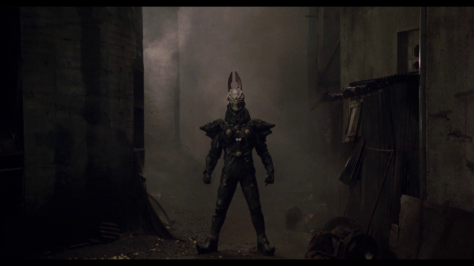
I’ve written before about how having access to books and television shows collecting stories about monsters of myth, legend, and whatever you’d classify cryptooology as (mygend?) was one of the things that tipped me over into full-on obsession with monsters, but that isn’t necessarily the only thing that did. Around that same time (the mid-to-late nineties), I had been introduced to an entire new type of video game: the RPG. Thanks mainly to the much more child-friendly Super Mario RPG, I was finally confident enough to take on other games by Square, the developers of Mario RPG. I jumped headlong into Chrono Trigger and the Final Fantasy games, and I’d continue to check out a few other RPGs here and there on later consoles. I was definitely not an RPG fanatic when compared to many other people (I don’t think I played through a single 3D RPG), but I was always intrigued by them—nowadays, I simply don’t have the patience for it, but I still hold a lot of nostalgic affection for the ones I played on the SNES specifically, and the many strange and wonderful things that were found in them. They were to me what I imagine science fiction and fantasy novels and tabletop roleplaying games were to kids of the previous decades.
What does any of that have to do with monsters? Well, if you’ve played any RPG, you know the answer: every single one is crawling with them, whole titanic bestiaries heaving with diverse creatures of every description. Given that so much of these games were map-rambling and dungeon-crawling with random encounters to give your party a way to get stronger and earn money (and also to pad out the length—how much of those “one-hundred hour games” was actually spent getting anywhere?), they certainly needed a lot of monsters that could show up again and again, and that’s not even counting scripted boss encounters. The sheer scope of the critter collections in these games also means that, despite some attempt at coherence, you really couldn’t expect the designers to stick to some rigid idea of what is or isn’t allowed in the world of the game—which is to say, they just let their imaginations run wild when designing random encounter monsters, without having to deal with nitpicky details like “a coherent tone” or even “making any sense at all.” Even if random encounters to our more sophisticated modern eyes is an unnecessary bit of ancient design, at the very least the mechanic gave me a chance to see a whole swathe of bizarre and delightful monstrosities pulled from the developers collective imagination, things that made me ask questions and wonder what it was I was looking at. The monsters you saw in these games were of the purest kind—sheer nightmare visions that obeyed no rules, they simply were.
Continue reading Monster Multimedia: The Monsters of Final Fantasy VI →




